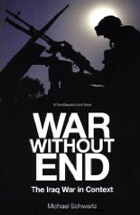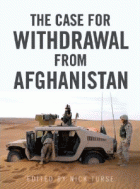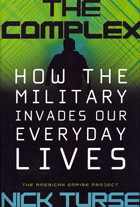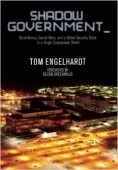[Note for TomDispatch Readers: Our special offers are still available for Alfred McCoy’s new Dispatch Book, In the Shadows of the American Century: The Rise and Decline of U.S. Global Power. Of it, Oliver Stone has written, “One of our best and most underappreciated historians takes a hard look at the truth of our empire, both its covert activities and the reasons for its impending decline.” For a donation of $100 or more ($125 if you live outside the U.S.A.), you can get a signed, personalized copy from the author. (For further details, go to our donation page.) In addition, Haymarket Books, which produces and distributes our expanding line of volumes, will give any TD reader an exclusive 40% discount on the purchase of McCoy’s book. Simply click here to take advantage of this special offer and in that way also render a little always appreciated support for TD. Tom]
Empire of Madness
Fiddling Through the Smoke in 2025
By Tom Engelhardt
It’s January 2025, and within days of entering the Oval Office, a new president already faces his first full-scale crisis abroad. Twenty-four years after it began, the war on terror, from the Philippines to Nigeria, rages on. In 2024 alone, the U.S. launched repeated air strikes on 15 nations (or, in a number of cases, former nations), including the Philippines, Burma, Pakistan, Afghanistan, Yemen, the former Iraq, the former Syria, Kurdistan, Turkey, Saudi Arabia, Egypt, Tunisia, Libya, Mali, and Nigeria.
In the weeks before his inauguration, a series of events roiled the Greater Middle East and Africa. Drone strikes and raids by U.S. Special Operations forces in Saudi Arabia against both Shiite rebels and militants from the Global Islamic State killed scores of civilians, including children. They left that increasingly destabilized kingdom in an uproar, intensified the unpopularity of its young king, and led to the withdrawal of the Saudi ambassador from Washington. In Mali, dressed in police uniforms and riding on motorcycles, three Islamic militants from the Front Azawad, which now controls the upper third of the country, gained entry to a recently established joint U.S.-French military base and blew themselves up, killing two American Green Berets, three American contractors, and two French soldiers, while wounding several members of Mali’s presidential guard. In Iraq, as 2024 ended, the city of Tal Afar -- already “liberated” twice since the 2003 invasion of that country, first by American troops in 2005 and then by American-backed Iraqi troops in 2017 -- fell to the Sunni militants of the Global Islamic State. Though now besieged by the forces of the Republic of Southern Iraq backed by the U.S. Air Force, it remains in their hands.
The crisis of the moment, however, is in Afghanistan where the war on terror first began. There, the Taliban, the Global Islamic State (or GIS, which emerged from the Islamic State, or ISIS, in 2019), and al-Qaeda in Afghanistan (or AQIA, which split from the original al-Qaeda in 2021) now control an increasing number of provincial capitals. These range from Lashgar Gah in Helmand Province in the southern poppy-growing heartlands of the country to Kunduz in the north, which first briefly fell to the Taliban in 2015 and now is in the hands of GIS militants. In the meantime, the American-backed government in the Afghan capital, Kabul, is -- as in 2022 when a “surge” of almost 25,000 American troops and private contractors saved it from falling to the Taliban -- again besieged and again in danger. The conflict that Lieutenant General Harold S. Forrester, the top U.S. commander in Afghanistan, had only recently termed a “stalemate” seems to be devolving. What’s left of the Afghan military with its ghost soldiers, soaring desertion rates, and stunning casualty figures is reportedly at the edge of dissolution. Forrester is returning to the United States this week to testify before Congress and urge the new president to surge into the country up to 15,000 more American troops, including Special Operations forces, and another 15,000 private contractors, as well as significantly more air power before the situation goes from worse to truly catastrophic.
Like many in the Pentagon, Forrester now regularly speaks of the Afghan War as an “eonic struggle,” that is, one not expected to end for generations...
You think not? When it comes to America’s endless wars and conflicts across the Greater Middle East and Africa, you can’t imagine a more-of-the-same scenario eight years into the future? If, in 2009, eight years after the war on terror was launched, as President Obama was preparing to send a “surge” of more than 30,000 U.S. troops into Afghanistan (while swearing to end the war in Iraq), I had written such a futuristic account of America’s wars in 2017, you might have been no less unconvinced.
Who would have believed then that political Washington and the U.S. military’s high command could possibly continue on the same brainless path (or perhaps it would be more accurate to say superhighway) for another eight years? Who would have believed then that, in the fall of 2017, they would be intensifying their air campaigns across the Greater Middle East, still fighting in Iraq (and Syria), supporting a disastrous Saudi war in Yemen, launching the first of yet another set of mini-surges in Afghanistan, and so on? And who would have believed then that, in return for prosecuting unsuccessful wars for 16 years while aiding and abetting in the spread of terror movements across a vast region, three of America’s generals would be the most powerful figures in Washington aside from our bizarre president (whose election no one could have predicted eight years ago)? Or here’s another mind-bender: Would you really have predicted that, in return for 16 years of unsuccessful war-making, the U.S. military (and the rest of the national security state) would be getting yet more money from the political elite in our nation’s capital or would be thought better of than any other American institution by the public?
Last year, an internal report commissioned by the Broadcasting Board of Governors, the agency that oversees Voice of America and other U.S. government-supported foreign news outlets, examined the “perception of U.S. international media in Afghanistan.” This study, obtained by TomDispatch via the Freedom of Information Act, concluded that Afghans saw U.S.-backed media as “useful” and “essential.” Far more intriguing, however, were the observations embedded in the responses of 60 Afghans from Kabul Province who took part in the survey.
You’ll recall that, in 2001, the Bush administration launched the Afghan War with a host of explicit and implicit promises to the people of Afghanistan: the vanquishing of the Taliban, the establishment of peace, the promotion of women’s rights, genuine economic development, support for education, and so on. “We know that true peace will only be achieved when we give the Afghan people the means to achieve their own aspirations,” said President George W. Bush in April 2002. He then invoked the patron saint of nation building from the post-World War II era as he offered an unambiguous pledge to Afghans that Washington would transform their country. “By helping to build an Afghanistan that is free from this evil and is a better place in which to live, we are working in the best traditions of George Marshall.”
Fifteen years later, however, Afghans surveyed about two U.S.-funded news programs offered responses that hardly suggested halcyon days had arrived. They talked little of “peace,” “stable government,” or the “education system for boys and girls” once invoked by Bush. Instead, speaking about what she heard on the U.S.-funded news programs, a 40-year-old housewife mentioned coverage of “fighting and suicide attacks that are conducted in every province.” Another cited “family violation[s] against women [and s]mall girls... given in marriage to old people for money.” A 39-year-old woman discussed the utility of news programs that “increase our general awareness about different issues including fighting, confiscating ammunition... [and] drone strikes."
A 31-year-old woman spoke of the masses of Afghans that, thanks to such broadcasts, she had learned were fleeing to Europe and the perils along the way “which can cause them to be killed and their property lost” and went on to cite the coverage of International Women’s Day, noting that she learned how “even two-year-old children are raped. Women commit suicide by burning themselves.” She also referred to a program about the grim case of Farkhunda, a young woman brutally murdered by a mob in the streets of Kabul for supposedly burning a Quran (she didn’t), pointing out that “none of them [are]... sentenced or executed yet.” Even the report’s authors got in on the act, noting the country’s “high rate of illiteracy” and the “limited economic and social opportunities available in rural villages, which is why some people are forced to resort to unsavory acts, such as selling girls to older men, familial rape, and narcotic addiction.” They also pointed out that “the instability and large foreign presence in Afghanistan over the past 15 years make it difficult for young people to develop and appreciate Afghanistan’s cultural assets.”
Read between the lines and those positive Afghan appraisals of U.S.-backed media are actually a grim primer on the broken promises and abject failures of the American project in their country. But, for all the reasons mentioned in the latest piece by TomDispatch regular Ann Jones, author of They Were Soldiers: How the Wounded Return from America's Wars -- The Untold Story, there’s little chance it was read that way by the Broadcasting Board of Governors or anyone else in Washington. Today, the always-intrepid Jones -- who witnessed the effects of the American war in Afghanistan firsthand over the better part of a decade -- takes stock of that once-and-future conflict and a military mission that seemingly never fails to fail. Nick Turse
Afghanistan Again?
The American Military’s Repetition-Compulsion Complex
By Ann JonesHere we go again! Years after most Americans forgot about the longest war this country ever fought, American soldiers are again being deployed to Afghanistan. For almost 16 years now, at the command of three presidents and a sadly forgettable succession of generals, they have gone round and round like so many motorists trapped on a rotary with no exit. This time their numbers are officially secret, although variously reported to be 3,500 or 4,000, with another 6,000-plus to follow, and unknown numbers after that. But who can trust such figures? After all, we just found out that the U.S. troops left behind in Afghanistan after President Obama tried to end the war there in 2014, repeatedly reported to number 8,400, actually have been “closer to 12,000” all this time.
The conflict, we’re told, is at present a “stalemate.” We need more American troops to break it, in part by “training” the Afghan National Army so its soldiers can best their Taliban countrymen plus miscellaneous “terrorist” groups. In that way, the U.S. military -- after only a few more years of “the foreseeable future” in the field -- can claim victory.
[Note for TomDispatch Readers: Remember the special offers still available on historian Alfred McCoy’s just-published Dispatch Book, In the Shadows of the American Century: The Rise and Decline of U.S. Global Power. Of it, Ann Jones said, “As the empire’s political, economic, and military strategies unravel under cover of secrecy, America’s neglected citizens would do well to read this book." For a donation of $100 or more ($125 if you live outside the U.S.A.), you can get a signed, personalized copy from the author. (For further details, go to our donation page.) In addition, Haymarket Books, which produces and distributes our expanding line of volumes, will give any TD reader an exclusive 40% discount on the purchase of McCoy’s book. Simply click here to take advantage of this special offer and, while you're at it, offer a little always appreciated support for TD. Tom]
The United States just experienced its largest rainfall event in memory. For the first time in recorded weather history, two category 4 hurricanes, Harvey and Irma, hit in a single season (not yet over). And San Francisco, famed for its chilliness, experienced an unheard of 106 degree day as September began, while a record West Coast heat wave, essentially an unending Irma or Harvey of wildfires, left parts of the region, from Los Angeles to British Columbia, enwreathed in a pall of smoke and ash (without even an El Niño year to blame for it). And did I mention that both states hit by those recent hurricanes have climate-change denying governors? Or that the man now in charge in Washington also denies the reality of climate change (a Chinese hoax!) and has stocked his administration with a remarkable cast of fervent deniers (the latest such appointment being the head of NASA), who have essentially wiped all references to the phenomenon off every imaginable federal website, fired climate-change scientists, and -- as a crew regularly backed in their careers by big energy -- seem intent on recreating the fossil-fueled America of The Donald’s 1950s childhood.
Fortunately, as TomDispatch regular Michael Klare tells us today, the cavalry is riding to the rescue -- more or less literally. In a government shutting down anything faintly connected to global warming, only one institution isn’t now run by deniers and that’s the U.S. military. As Klare points out, its high command is still planning for a radically climate-changed planet. Unfortunately, we’re talking about the same institution whose generals have been in a “generational struggle” to win even one of the endless wars they’ve launched or wandered into since 9/11. They belong to an institution, the Pentagon, that has gobbled up almost unimaginable sums of taxpayer dollars, without in those same years even being capable of successfully auditing itself. In other words, our potential saviors, at a moment when the very environment that has for millennia welcomed humanity is up for grabs, might be thought of as the Keystone Cops of the twenty-first century. Tom
Beyond Harvey and Irma
Militarizing Homeland Security in the Climate-Change Era
By Michael T. KlareDeployed to the Houston area to assist in Hurricane Harvey relief efforts, U.S. military forces hadn’t even completed their assignments when they were hurriedly dispatched to Florida, Puerto Rico, and the U.S. Virgin Islands to face Irma, the fiercest hurricane ever recorded in the Atlantic Ocean. Florida Governor Rick Scott, who had sent members of the state National Guard to devastated Houston, anxiously recalled them while putting in place emergency measures for his own state. A small flotilla of naval vessels, originally sent to waters off Texas, was similarly redirected to the Caribbean, while specialized combat units drawn from as far afield as Colorado, Illinois, and Rhode Island were rushed to Puerto Rico and the Virgin Islands. Meanwhile, members of the California National Guard were being mobilized to fight wildfires raging across that state (as across much of the West) during its hottest summer on record.
Think of this as the new face of homeland security: containing the damage to America’s seacoasts, forests, and other vulnerable areas caused by extreme weather events made all the more frequent and destructive thanks to climate change. This is a “war” that won’t have a name -- not yet, not in the Trump era, but it will be no less real for that. “The firepower of the federal government” was being trained on Harvey, as William Brock Long, administrator of the Federal Emergency Management Agency (FEMA), put it in a blunt expression of this warlike approach. But don’t expect any of the military officials involved in such efforts to identify climate change as the source of their new strategic orientation, not while Commander in Chief Donald Trump sits in the Oval Office refusing to acknowledge the reality of global warming or its role in heightening the intensity of major storms; not while he continues to stock his administration, top to bottom, with climate-change deniers.
In 1985, at age 41, I visited Disney World for the first time. I remember the experience for two things: the endless lines so cleverly organized that you never knew how long they truly were and the Hawaiian Luau dinner I attended. Yes, a genuine Hawaiian feast that reminded me of American Chinese food circa 1953 and the unforgettable “entertainment” offered by “native” Hawaiian dancers with spears who smacked their weapons on the ground and rhythmically advanced on the diners glowering fiercely. Whoever those dancers were, they were quite skilled at playing “primitives” from elsewhere, also circa 1953, objects of fear, wonder, and scorn. (Oh yes, and Disney World was the place that first taught me this country had an obesity problem -- along with some of the most fattening food on the planet.)
I must admit that my grown-up’s eye view of Walt Disney’s fantasy universe left me a little shocked at the time, but I shouldn’t have been. After all, a decade or so earlier I had absorbed How to Read Donald Duck by Ariel Dorfman and Armand Matellart, an unforgettable exposé of the true nature of Disney-style American “innocence.” It was a document that had emerged from the democratic Chilean revolution of Salvador Allende, just one of the governing experiments of the twentieth century that the U.S. helped do in. (In fact, I still have my copy of that British-produced book from the mid-1970s, which, in its Spanish version, had quite literally been consigned to the flames and later in English was impounded by U.S. Customs. It was a work that no American publisher would put out at the time and so my well-worn copy has become a remarkably valuable collector’s item, as Dorfman points out in today’s post.)
Keep in mind that I had been a typical Disney kid of the 1950s. I read Walt's comics and raptly watched Walt Disney’s Disneyland on our black-and-white TV. That weekly extravaganza included such gems as “Our Friend the Atom,” a paean of praise to the all-American power source that, only a decade or so earlier, had obliterated two Japanese cities. Above all, though, the show was a living ad for the wonders of -- you guessed it -- Disneyland, which was partially constructed with money ABC paid to air it. (“Each week, as you enter this timeless land, one of these many worlds will open to you: Frontierland, tall tales and true from the legendary past! Tomorrowland, promise of things to come! Adventureland, the wonder world of nature’s own realm! Fantasyland, the happiest kingdom of them all!”) I can still remember yearning to visit Disneyland and see the guide on its “African” river at Adventureland shoot his pistol directly into the voracious maw of a hippopotamus. Of course, Uncle Walt’s showcase had been built in distant California at a moment when air travel wasn’t the commonplace of today and the farthest west I had ever been was Albany, New York.
Still, I do have something to thank Walt for. In the spring of 1980, in exile from his native Chile (then in the hands of its military), Ariel Dorfman walked unannounced into my office at Pantheon Books in New York City. Fortunately, thanks to Disney’s favorite duck, I already knew his work well and so was prepped to become the editor of his first two books in English. Now, another set of decades down the line, he completes the circle of our lives as he looks back by torchlight (so to speak) on his own experiences with Walt Disney and what they mean in the age of Donald Trump. Tom
How to Read Donald Trump
On Burning Books But Not Ideas
By Ariel DorfmanThe organizers of the white supremacist gathering in Charlottesville last month knew just what they were doing when they decided to carry torches on their nocturnal march to protest the dethroning of a statue of Robert E. Lee. That brandishing of fire in the night was meant to evoke memories of terror, of past parades of hate and aggression by the Ku Klux Klan in the United States and Adolf Hitler’s Freikorps in Germany.
The organizers wanted to issue a warning to those watching: that past violence, perpetrated in defense of the “blood and soil” of the white race, would once again be harnessed and deployed in Donald Trump’s America. Indeed, the very next day, that fatal August 12th, those nationalist fanatics unleashed an orgy of brutality that led to the deaths of three people and the injuring of many more.
Millions around America and the world were horrified and revolted by that parade of torches. In my case, however, they also brought to mind deeply personal memories of other fires that had burned darkly so many decades before, far from the United States or Nazi Europe. As I watched footage of that rally, I couldn’t help remembering the bonfires that lit up my own country, Chile, in the aftermath of General Augusto Pinochet’s September 11th coup in 1973 -- that “first 9/11,” which, with the active support of Washington and the CIA, had overthrown the popularly elected government of Salvador Allende.
[Note for TomDispatch Readers: Don’t forget our special offers on historian Alfred McCoy’s just-published Dispatch Book (already in its second printing!): In the Shadows of the American Century: The Rise and Decline of U.S. Global Power. Of it, Andrew Bacevich said, “This is history with profound relevance to events that are unfolding before our eyes.” For a donation of $100 or more ($125 if you live outside the U.S.A.), you can get a signed, personalized copy of the book. For further details, go to our donation page. (Many, many thanks to those of you who have already done this and so lent us a hand in tough times.) In addition, Haymarket Books, which produces and distributes our expanding line of volumes, will give any TD reader an exclusive 40% discount on the purchase of McCoy’s book. Simply click here to take advantage of this special offer. It’s a great way to support our efforts. Tom]
After 19 al-Qaeda militants armed only with box-cutters and knives hijacked four American commercial airliners, the U.S. military moved with remarkable efficiency to rectify the problem. In the years since, in its global war on terror, the Pentagon has ensured that America’s enemies in Afghanistan, Iraq, Syria, and elsewhere have regularly been able to arm themselves with... well, not to beat around the bush, a remarkable range of U.S. weaponry. The latest such story: a report that in recent fighting around the city of Tal Afar, the Iraqi military recovered a U.S.-produced FGM-148 Javelin anti-tank missile and launcher from an Islamic State weapons cache. That’s a weapon capable of taking out an M1 Abrams tank. And this is hardly the first time U.S. anti-tank missiles meant either for the Iraqi military or Syrian rebels backed by the CIA have turned up in the hands of ISIS militants. In 2015, that group released photos of its fighters using U.S.-made BGM-71 TOW anti-tank missiles.
Of course, when the American-trained, funded, and armed Iraqi army collapsed in the summer of 2014 in the face of relatively small numbers of ISIS fighters, that group took vast stores of U.S. weaponry and vehicles that they’ve used ever since. But that was hardly the end of it. The U.S. soon began retraining and rearming its Iraqi allies to the tune of $1.6 billion for “tens of thousands of assault rifles, hundreds of armored vehicles, hundreds of mortar rounds, nearly 200 sniper rifles, and other gear,” much of which, a government audit found, the Pentagon simply lost track of. The weaponry, you might say, went missing in action. No one knew whose hands much of it ended up in and this wasn’t a new story, either. For example, in 2007 the Government Accountability Office found that “the United States could not account for nearly 30% of the weapons it had distributed in Iraq since 2004 -- about 200,000 guns.”
Similar stories could be told about Afghanistan, another country where U.S. weaponry has disappeared in remarkable quantities. (The Taliban, for instance, recently released a video of their fighters sporting weaponry normally used only by U.S. Special Operations personnel.) In short, the Pentagon has been arming itself, its allies, and its enemies in a profligate fashion for years now in its never-ending conflicts across the Greater Middle East and Africa. As TomDispatch regular and retired Air Force Lieutenant Colonel William Astore suggests today, since 9/11 the U.S. military has in some sense been fighting itself -- and losing. Someday, when historians look back on this bizarre tale, they will have to explain one thing above all: Why, year after year, in the face of obvious and repetitive failure in such conflicts, was no one in Washington capable of imagining another course of action? Tom
The American Military Uncontained
Out Everywhere and Winning Nowhere
By William J. AstoreWhen it comes to the “world’s greatest military,” the news has been shocking. Two fast U.S. Navy ships colliding with slow-moving commercial vessels with tragic loss of life. An Air Force that has been in the air continuously for years and yet doesn’t have enough pilots to fly its combat jets. Ground troops who find themselves fighting “rebels” in Syria previously armed and trained by the CIA. Already overstretched Special Operations forces facing growing demands as their rates of mental distress and suicide rise. Proxy armies in Iraq and Afghanistan that are unreliable, often delivering American-provided weaponry to black markets and into the hands of various enemies. All of this and more coming at a time when defense spending is once again soaring and the national security state is awash in funds to the tune of nearly a trillion dollars a year.
What gives? Why are highly maneuverable and sophisticated naval ships colliding with lumbering cargo vessels? Why is an Air Force that exists to fly and fight short 1,200 pilots? Why are U.S. Special Operations forces deployed everywhere and winning nowhere? Why, in short, is the U.S. military fighting itself -- and losing?





















